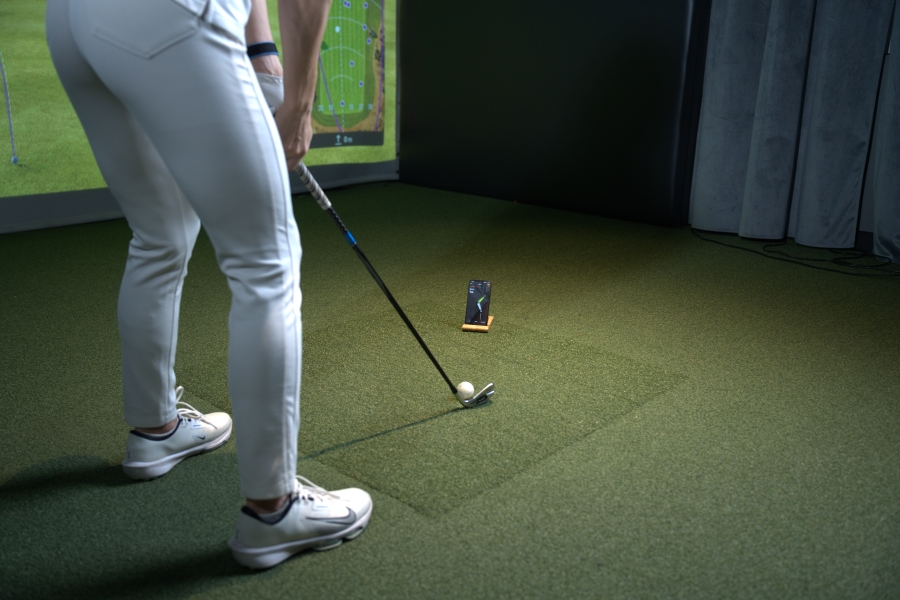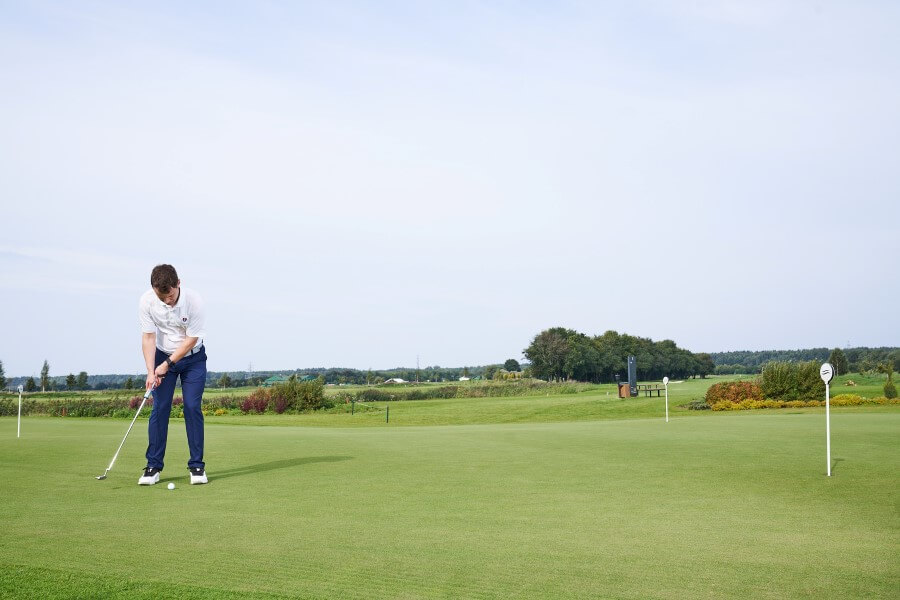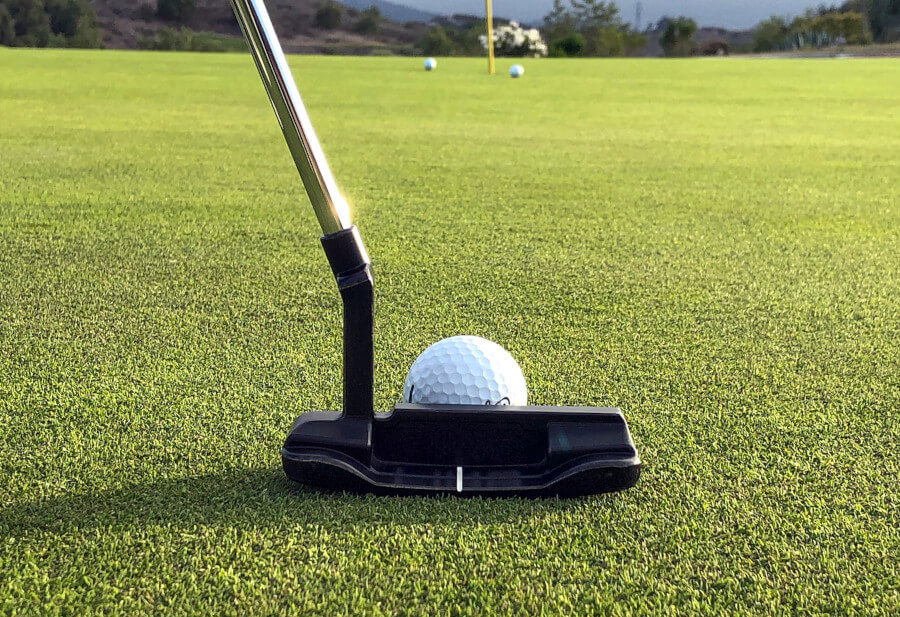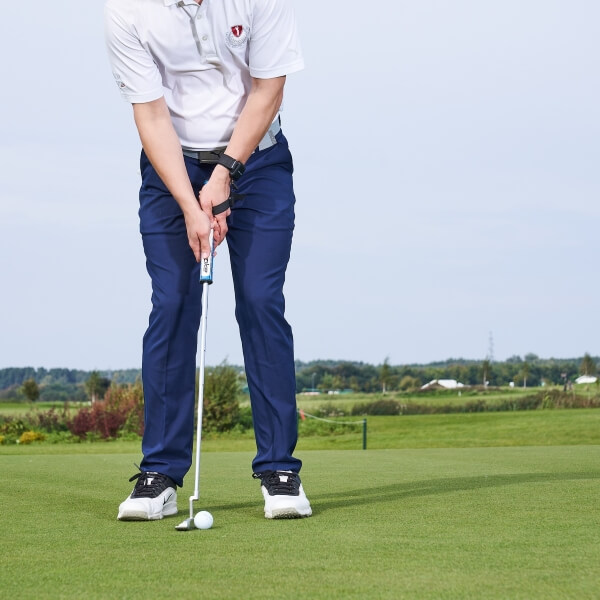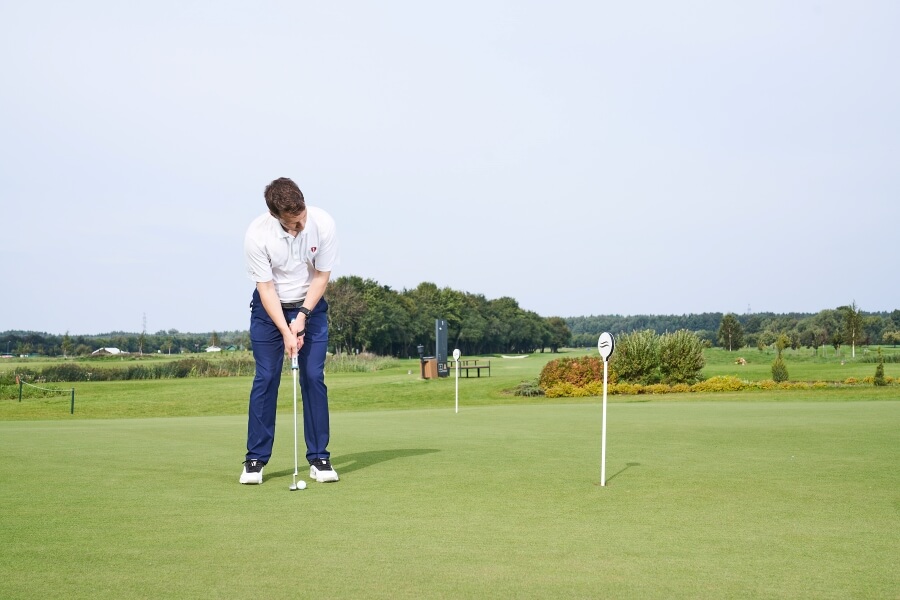Complete Golf Short Game Practice Plan: 60 & 30-Minute Routines with Drills
Have you ever been told that working on your short game is important? That spending more time on the greens will make you a better player?
Of course, this is true, but sometimes, instead of explaining how to practice, we just tell golfers they should practice.
If you’re looking for a short game practice routine that actually helps you lower your scores, you’re in the right place.
We’ve broken this down into two different options for you to choose from: one is an hour-long practice, and the other is thirty minutes. Choose the one that works best for your schedule!
Short Game Practice Routine (Key Takeaways)
Here are the most important things to know about putting together a strong short game practice plan and routine:
- A structured short game routine saves time and builds confidence follow either the 60-minute or 30-minute plan.
- Work on a variety of shots: partial wedges (80, 60, 40 yards), high shots from the rough, bump-and-runs, and bunker play.
- Finish every session with scoring practice chip, pitch, and putt out from different lies to simulate real on-course pressure.
- Use simple training aids like alignment sticks and incorporate HackMotion to measure wrist positions for better consistency.
- Rotate clubs during practice instead of relying on one wedge to prepare for all types of lies and distances.
For an interactive guide on structuring your range session and drills to work on at the driving range, check out our driving range practice plan!
Contents
One-Hour Short Game Practice Plan
The goal of the short game practice plan is to work on all shots from 100 yards and in.
However, it’s not a putting practice plan. You’ll notice that we incorporate putting into the final piece, but you’ll need to schedule putting practice for another time.
Short Game Practice Plan Breakdown (60 Minutes)
- Warm-up (5 minutes)
- Shots from 80, 60, and 40 yards (15 minutes)
- High shots from the rough (10 minutes)
- Chipping – bump and run (10 minutes)
- Bunker shots (10 minutes)
- Scoring practice (10 minutes)
Warm-up (5 Minutes)
Before jumping into the practice, make sure you stretch and take a few practice swings. Some golfers find that their back starts to get stressed when they practice short games for an extended period.
You’ll also want to take some half-swing shots with your wedge. Pick a general alignment line, but don’t worry so much about distance control at this point.
Focus on just making solid contact and warming up your muscles.
Shots From 80, 60, and 40 Yards (15 Minutes)
This part of the practice plan focuses on distance control in the short game. Many players struggle with these abnormal yardages like 80, 60, or 40 yards and they don’t have the right shot in their bag.
Before you start this process, use a rangefinder to get some targets for you to work with. If you can find 90, 50, and 30 yards, that also works fine.
Next, you will start hitting shots, varying the club you use for each of these targets:
- 80 yards: Hit 10 shots with a gap wedge, focusing on smooth, controlled swings.
- 60 yards: Switch to a sand wedge and hit 10 shots, aiming for consistent contact and distance control.
- 40 yards: Use a lob wedge for 10 shots, practicing trajectory control and precision.
While you are practicing, pay close attention to the length of the swing you are taking and the club you are using. When finished, make a note on your phone or write down exactly the swing needed and the club used to achieve each of these distances.
The feel is important in the course, but incorporating some mechanics into this is a better way to be consistent.
High Shots From the Rough (10 Minutes)
To be great around the greens, you need to be able to hit shots out of the rough that still fly high.
Hitting a golf ball from the rough means you will lose some spin and control; therefore, height can help get you back in the game.
Find a spot with thick rough and focus on hitting about 15 shots with a high loft and soft landing.
Start by ensuring that the golf balls are landing on the practice green. As you improve, aim to get them within a 6-foot circle around the pin.
To hit great high shots from the rough, keep an open clubface and a steeper angle of attack. This is an excellent time to use your HackMotion device.
If you’re unsure whether your clubface is open or if your lead wrist is slightly extended, the HackMotion swing analyzer can provide the feedback you need.
Chipping – Bump and Run (10 Minutes)
Now that you have the high shots down, you’ll want to start working on the lower chip shots. For this, switch to something like your 8-iron or 9-iron. The goal is to keep the ball a little lower and allow it to roll up to the target.
In this 10-minute block, try to hit about 20 shots, aiming for a lower trajectory. Practice to a pin in the middle of the green and one in the back of the green, and see which club works best for each.
Play these chip shots from the short grass and keep your lead wrist more flexed through impact. You’ll want these shots to be a very simple movement with no wrist cock or hinge.
Bunker Shots (10 Minutes)
The hardest part about bunker practice is often finding a suitable practice bunker to work with. Sometimes, this is tricky, and the sand in the practice bunker is less than ideal. However, bunker shot practice is a must if you want to play better on the course.
While practicing from the bunker, ensure your stance is open, keep the ball forward or centered, strike the ball about an inch behind it, and follow through.
You’ll want to hit some shots with your sand wedge and lob wedge. If your course has a lot of bunkers that are 30 or 40 yards in front of the green, you may also want to consider a gap wedge.
Don’t make every lie that you hit out of perfect. Push a few down a bit so you learn how to hit from a plugged lie. Also, practice from sloped lies to see how you need to adjust your game.
Scoring practice (10 Minutes)
Finally, to pull your entire practice session together and make it meaningful, you need to include scoring practice.
For this part of the session, you’ll need your putter and wedges. Place a golf ball in 10 or 15 different positions around the green. For each location, chip or pitch up, and then putt out.
See how many strokes it takes you.
Make a note of this, and the next time you work on your game, try to beat that total number. This type of practice is what really helps you understand the course and lower your scores.
Thirty-Minute Short Game Practice Plan
For the thirty-minute short game practice plan, all you need to do is spend less time in each section of practice.
It’s still best if you can run through all of these shots, as they will all have a profound impact on your game.
When you have thirty minutes to practice, make sure to write some notes about the areas of your game that were the strongest and weakest. Additionally, learn some of the short game drills shown below so that you can quickly incorporate them into your short game practice.
Short Game Practice Plan Breakdown (30 Minutes)
- Warm-up (2 minutes)
- Shots from 80, 60, and 40 yards (8 minutes)
- High shots from the rough (5 minutes)
- Chipping – bump and run (5 minutes)
- Bunker shots (5 minutes)
- Scoring practice (5 minutes)
Drills to Incorporate into Your Short Game Practice
Not only do drills help you understand the concepts you are practicing, but they can also fix issues you may encounter.
Here are some of our favorite drills based on problems you may encounter in your short game practice.
Looking for more drills to refine your short game or address specific swing faults? Explore our Drills Library – packed with drills for every swing fault and short game technique that you can take to the driving range today.
Swing Plane Drill
A proper swing plane is essential for solid contact in your pitching and short game shots.
This drill helps you find the correct path into the ball, preventing chunks and thin shots while giving you confidence that even your misses will finish on the green.
Swing Plane Drill – Step by Step:
- Take your normal stance and set up to a ball.
- Place two alignment sticks in the ground at about a 45° angle — one just outside your trail foot and one just ahead of your lead foot.
- Make practice swings, keeping the clubhead above the sticks on both the backswing and follow-through.
- Once you’re comfortable, start hitting shots to simulate real on-course situations.
Towel Under the Arms Drill
This drill trains your arms and body to stay connected during the pitching motion.
By keeping a towel tucked under both arms, you’ll eliminate excess hand action and learn to power your shots with body rotation. It’s a simple way to build better tempo and improve your wrist control.
Towel Under the Arms Drill – Step by Step:
- Place a golf towel across your chest and secure it under both arms.
- Grip your club and make smooth practice swings, keeping the towel in place.
- Use HackMotion to monitor your wrist action and tempo while staying connected.
- Progress to hitting short pitch shots, focusing on body rotation to create consistent contact.
Lead Arm Only Drill
The Lead Arm Only Drill helps you make crisp, reliable contact on chip shots by simplifying the motion.
With only your lead hand controlling the club, you’ll eliminate excess wrist flicking and learn to keep the clubhead stable through impact. It’s also an excellent way to build tempo and distance control.
Lead Arm Only Drill – Step by Step:
- Set up to a short chip shot and remove your trail hand from the club. Rest it on your lead forearm or by your trail pocket.
- Make a few practice strokes, keeping your lead hand ahead of the clubhead and brushing the grass just in front of the ball position.
- Hit short chip shots using only your lead hand, focusing on clean contact and smooth tempo.
- Use this drill as a quick warm-up before your round to sharpen your short game feel.
Par 18 Drill
The Par 18 Drill is a scoring challenge that simulates real on-course pressure.
By chipping and then putting out, you’ll practice the full “up-and-down” process, building confidence in your short game under competition-like conditions. It works well solo or with a partner to add pressure.
Par 18 Drill – Step by Step:
- Drop a ball just off the green (within about five yards) and choose a target hole.
- Go through your pre-shot routine, select your club, and chip toward the hole.
- Wherever the chip finishes, putt out as if you were playing on the course.
- Record your score: one putt = par, two putts = bogey, etc.
- Play nine “holes” and add up your total score.
- Track your progress over time and challenge a partner for added competition.
Additional Tips to Help Improve Your Short Game Practice
Here are a few more tips to add to your short game practice routine to make sure it’s effective and helpful:
- Don’t practice with the same wedge the entire time; mix things up between your short irons, sand wedge, lob wedge, etc.
- Purchase an alignment stick so that you have something to use for drills and when practicing alignment and aim.
- Use your HackMotion when practicing both chipping and pitching. Analyze these sessions separately and make sure that with chip shots, your lead wrist is slightly flexed, but with pitch shots, you see a little more extension at impact.
- Don’t be afraid to mix your chipping, pitching, sand, and putting practice. When you combine these shots and emulate what you experience on the course, it’s the most effective practice you will find.
Final Thoughts
Now, all that’s left to do is block out an hour of your day and get out to the range to work on your short game.
Get your plan together ahead of time, ensure you’re going to a place with the facilities to work on this routine, and bring along your alignment stick and HackMotion.
This short game practice plan will help you lower your scores and improve your confidence with a wedge in your hand.



